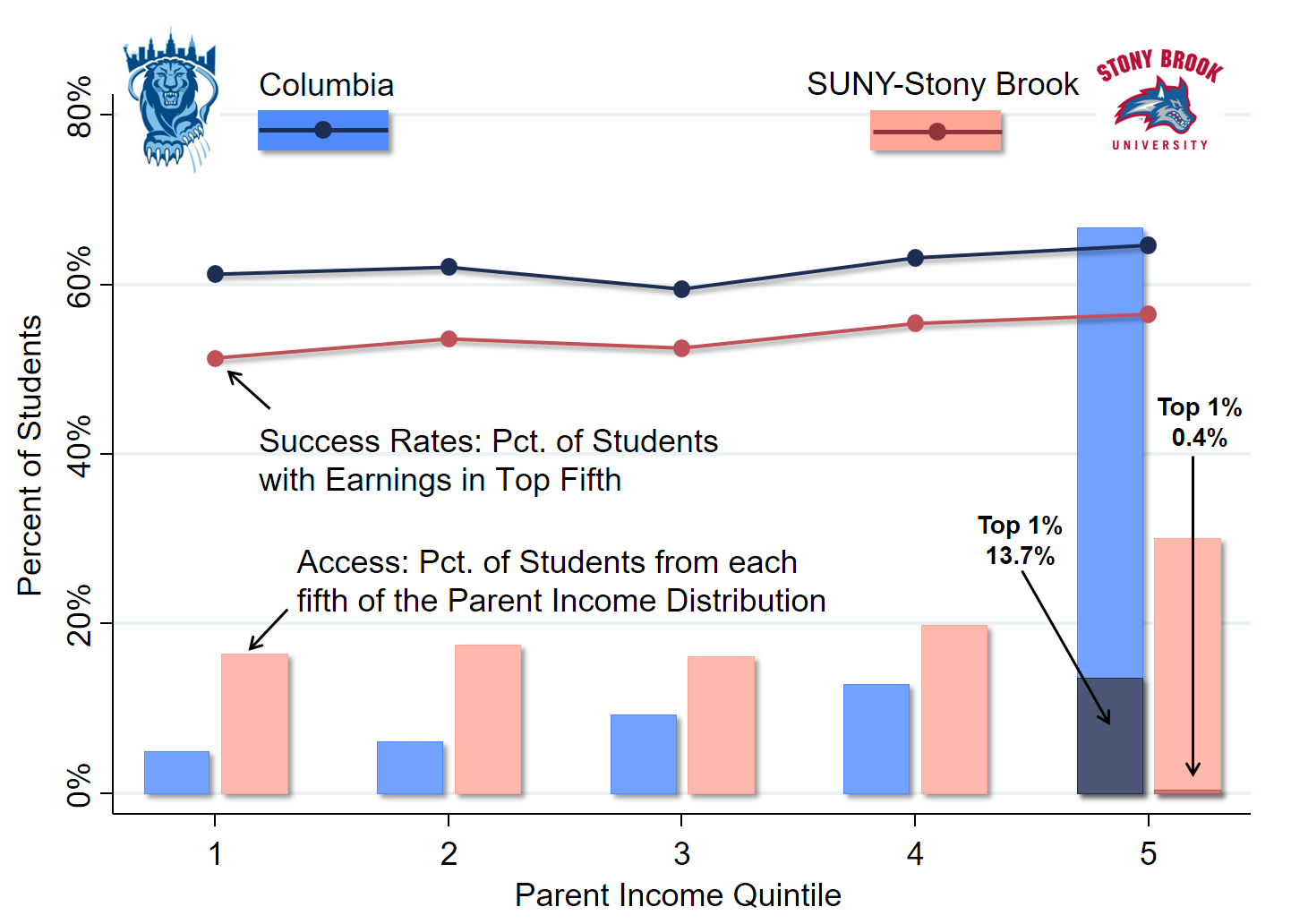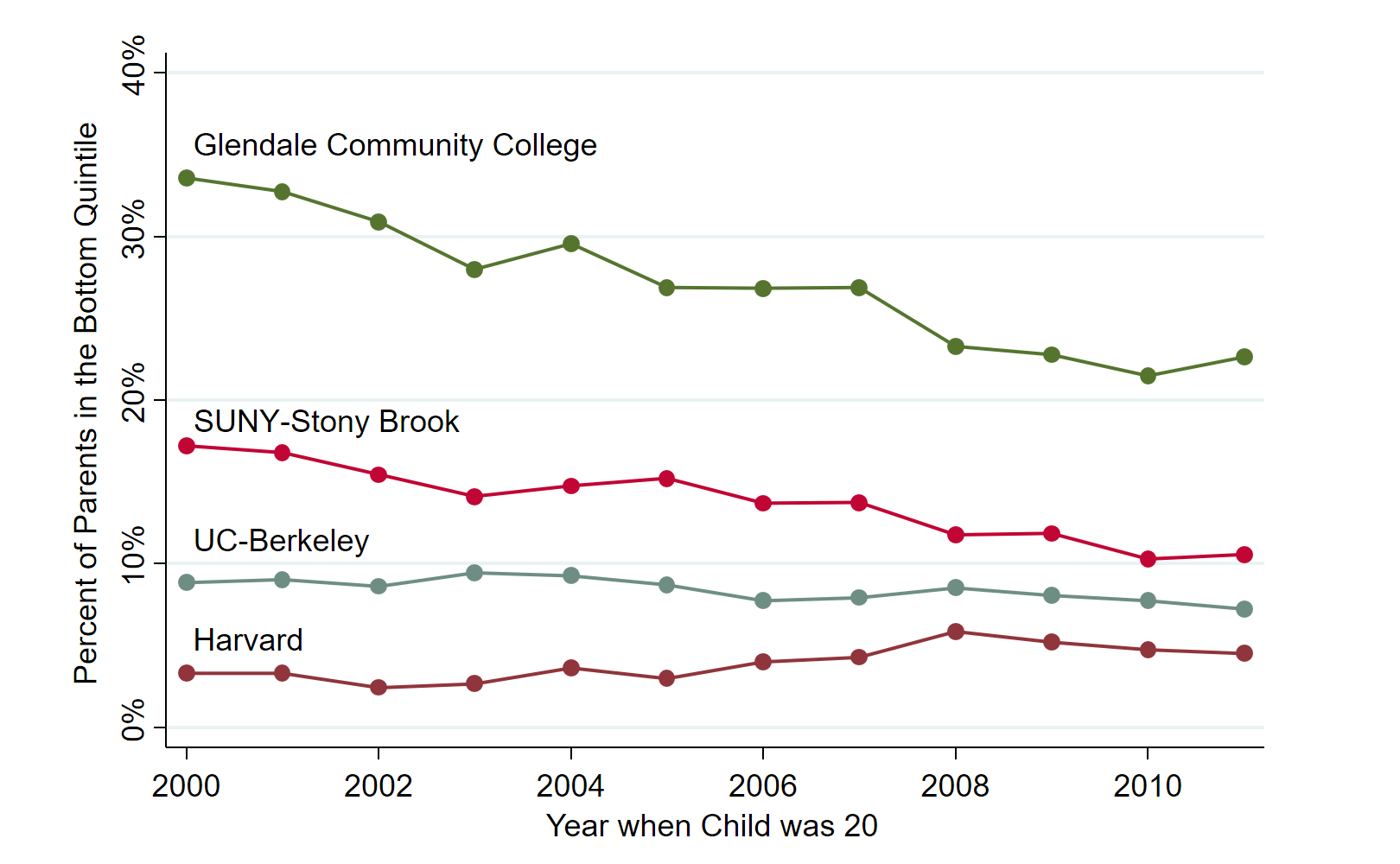Mobility Report Cards for Columbia and SUNY-Stony Brook

Which colleges in America help the most children climb the income ladder?
We take a step toward answering this question by constructing mobility report cards – statistics on students’ earnings and their parents’ incomes – for each college in America.

Access to colleges varies substantially across the income
distribution. At Ivy League colleges such as Columbia University,
shown in the chart above, more students come from families in the top
1% of the income distribution than the bottom half of the income
distribution.
Children from low-income families have nearly the same odds of
reaching the top fifth of the income distribution as their peers from
higher-income families at selective colleges, indicating that children
from low-income backgrounds admitted to selective colleges are not
over-placed at these schools.
Some colleges, such as SUNY-Stony Brook, have a much larger fraction
of children from low-income families yet have earnings outcomes that
are nearly comparable to those at highly selective colleges such as
Columbia. These colleges have very high mobility rates — they have
large numbers of students who come from poor families and end up with
high incomes.
| Rank | Name | Mobility Rate | Access | Success Rate |
|---|---|---|---|---|
| Cal State University - LA | 9.9% | 33.1% | 29.9% | |
| Pace University - New York | 8.4% | 15.2% | 55.6% | |
| SUNY - Stony Brook | 8.4% | 16.4% | 51.2% | |
| Technical Career Institutes | 8.0% | 40.3% | 19.8% | |
| University of Texas - Pan American | 7.6% | 38.7% | 19.8% | |
| City Univ. of New York System | 7.2% | 28.7% | 25.2% | |
| Glendale Community College | 7.1% | 32.4% | 21.9% | |
| South Texas College | 6.9% | 52.4% | 13.2% | |
| Cal State Polytechnic - Pomona | 6.8% | 14.9% | 45.8% | |
| University of Texas - El Paso | 6.8% | 28.0% | 24.4% |
We define a college’s mobility rate as the fraction of its students who come from a family in the bottom fifth of the income distribution and end up in the top fifth of the income distribution. Each college’s mobility rate is the product of access, the fraction of its students who come from families in the bottom fifth, and its success rate, the fraction of such students who reach the top fifth. The colleges that have the highest upward mobility rates, listed in the table above, are typically mid-tier public schools that have both large numbers of low-income students and very good outcomes.

The fraction of students from low-income families at the Ivy-Plus colleges increased very little
over the period 2000-2011. Meanwhile, access at institutions with the highest mobility rates
(e.g., SUNY-Stony Brook and Glendale in the figure above) fell sharply over the 2000s.
Thus, the colleges that may have offered many low-income students pathways to success are
becoming less accessible to them.
These trends in access call for a reassessment of policies at the
federal, state, and college levels. The statistics constructed here give researchers and
policymakers data to develop and test new policy solutions.
To learn more, please see our
fact sheet,
non-technical summary,
paper, or
slides;
download the data; or explore the data for each college with this
interactive tool created by the New York Times.
The U.S. Department of the Treasury has released a blog post comparing our mobility report cards with the Department of Education's College Scorecards.